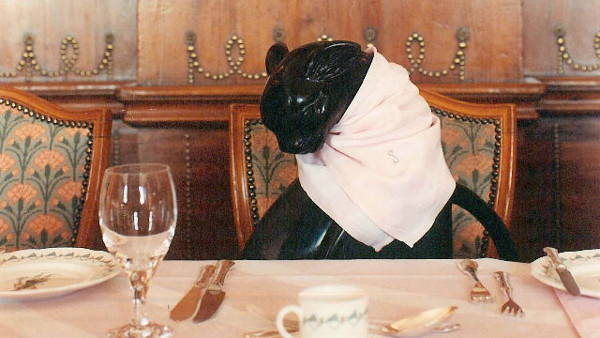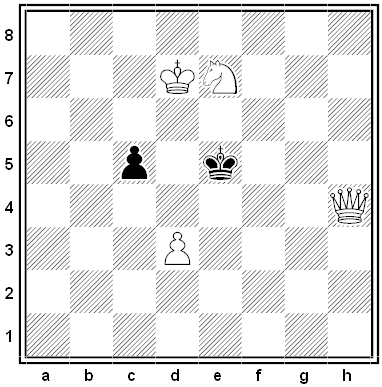If we’re given 32 stones, each a different weight, how can we find both the heaviest and the second heaviest stone in 35 weighings with an equal-arm balance?
Perspective

Seeing the earth from a distance has changed my perception of the solar system as well. Ever since Copernicus’ theory (that the earth was a satellite of the sun, instead of vice versa) gained wide acceptance, men have considered it an irrefutable truth; yet I submit that we still cling emotionally to the pre-Copernican, or Ptolemaic, notion that the earth is the center of everything. The sun comes up at dawn and goes down at dusk, right? Or as the radio commercial describes sunset: ‘When the sun just goes away from the sky …’ Baloney. The sun doesn’t rise or fall: it doesn’t move, it just sits there, and we rotate in front of it. … Everyone knows that, but I really see it now. No longer do I drive down a highway and wish the blinding sun would set; instead I wish we could speed up our rotation a bit and wing around into the shadows more quickly. I do not have to force myself to call this image to mind; it is there, and occasionally, I use it for other things, although admittedly I have to stretch a bit. ‘What a pretty day’ makes me think that it’s always a pretty day somewhere; if not here, then we just happen to be standing in the wrong place. ‘My watch is fast’ translated into no, it’s not, it’s just that you should be standing farther to the east.
— Astronaut Michael Collins, Carrying the Fire, 1975
Electrical Fault

In 1969, California attorney Russell Tansie sued God for $100,000 on behalf of his legal secretary, who blamed Him for destroying her Phoenix home with a bolt of lightning in 1960:
Plaintiff is informed and believes that defendant (God) at all times mentioned herein is responsible for the maintenance and operation of the Universe, including the weather in and upon the State of Arizona, and that on or about August 17, 1960, defendant so maintained and controlled the weather, in, around and upon Phoenix, in such careless and negligent manner as to cause lightning to strike the plaintiff’s house, setting it on fire and startling, frightening and shocking the plaintiff.
Tansie added that God “did this with full knowledge and that the act was committed with malice and ill will.” He hoped to win a default judgment when the defendant failed to appear in court. I don’t know the outcome; maybe they reached a settlement.
Lucky Fourteen

When a party of 13 dines at London’s Savoy Hotel, the management wards off bad luck by setting a place for Kaspar, a two-foot-tall statue of a black cat.
According to legend, when diamond magnate Woolf Joel held a dinner party for 14 guests at the hotel in 1898, one guest dropped out, and another predicted that the first person to leave the table would die. Joel left first and was shot dead a few weeks later.
To allay any further trouble, architect Basil Ionides sculpted Kaspar in 1927. When he joins a dining party, the cat has a napkin tied around his neck and is served like a regular diner, with a full place setting, champagne and wine.
Winston Churchill so admired Kaspar that he called for his attendance at every meeting of the Other Club, the political dining society that he founded with F.E. Smith. Kaspar has attended every fortnightly meeting for the last 88 years. Presumably he has a tell-all memoir in the works.
Black and White
None for All

If a lion hunts a herd of antelope, what rules govern the herd’s behavior? One intriguing possibility is known as selfish herd theory: Rather than acting to benefit the group as a whole, each member positions itself so that there’s at least one other animal between it and the predator. This produces a pattern known as a Voronoi tesselation — if each dot in the diagram above is an antelope, then the surrounding colored region is the area that’s closer to that antelope than to any of its neighbors. If a lion enters your cell, then you’re the antelope that’s going to get eaten.
This understanding helps to explain some herd behavior. Each animal wants to make its “domain of danger” as small as possible and to be as far as possible from the predator. Dominant animals tend to get prime positions near the center, subordinate animals get pushed to the fringes, and the whole formation evolves continuously as predator and prey move about.
Studies have shown that groups of fiddler crabs tend to take up Voronoi patterns fairly quickly when a predator first appears, and to huddle together when the danger increases as each tries to reduce its surrounding polygon. This actually leads some to move toward the predator as they try to reach the center and put others between the hunter and themselves. Those that violate the movement rules tend to get picked off, which reinforces the evolutionary strength of the strategy.
Unquote
“An ignorant person is one who doesn’t know what you have just found out.” — Will Rogers
Skyward

An aviators’ drinking song from World War I, from James Gilbert’s 1978 anthology Skywriting:
A young aviator lay dying
At the end of a bright summer’s day.
His comrades had gathered around him
To carry his fragments away.
The aeroplane was piled on his wishbone,
His Lewis was wrapped round his head,
He wore a spark plug in each elbow,
‘Twas plain he would shortly be dead.
He spat out a valve and a gasket
As he stirred in the sump where he lay,
And then to his wondering comrades
These brave parting words did he say:
“Take the manifold out of my larynx
And the butterfly valve off my neck.
Remove from my kidneys the camrods;
There’s a lot of good parts in this wreck.
“Take the piston rings out of my stomach,
And the cylinders out of my brain.
Extract from my liver the crankshaft,
And assemble the engine again.
“Pull the longeron out of my backbone,
The turnbuckle out of my ear,
From the small of my back take the rudder —
There’s all of your aeroplane here.”
The Union-Closed Sets Conjecture
A family of sets is said to be union-closed if, given any two sets in the family, their union is as well. Here’s an example:
{}, {1,3}, {2}, {1,2,3}, {1,2,3,4}
Combine any two of those sets and you’ll get a member of the same family.
Now, provided our family is finite and consists of more than just the empty set, is there always an element that’s present in at least half of the sets? In the example above, the answer is yes: The element 2 appears in three of the five sets.
Will this always be the case? Strange to say, no one knows. Though the problem is almost absurdly simple to state, it has remained unsolved since Péter Frankl first posed it in 1979.
Henning Bruhn and Oliver Schaudt survey the state of the inquiry here. “The union-closed sets conjecture still has a bit of a journey ahead of it,” they conclude. “We hope it will be an exciting trip.”
(Thanks, Drake.)
In a Word

ocivity
n. laziness

